Nature: Antarctica Blu-ray Movie
HomeNature: Antarctica Blu-ray Movie 
Under Antarctic Ice / Encountering Sea MonstersQuestar | 2003-2005 | 110 min | Not rated | May 12, 2009
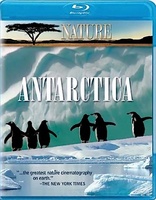
Movie rating
7 | / 10 |
Blu-ray rating
| Users | 0.0 | |
| Reviewer | 2.0 | |
| Overall | 2.0 |
Overview
Nature: Antarctica (2003-2005)
'Under Antarctic Ice' - On the surface, it's the bleakest of lands, with ferocious winds, flightless birds, and enough ice to flood half the planet's population if it were to melt. But below that frozen mass, a fantastic environment of indescribable beauty teems with life. Academy Award-winner Hillary Swank narrates this mesmerizing program shot in high definition over a period of two years. 'Encountering Sea Monsters' - Take the plunge with deep-sea cameraman Bob Cranston as he encounters "the stuff of nightmares." Tim Matheson narrates this gripping program that explores the gloomy green ocean depths to discover fantastic worlds and the beautiful but deadly creatures that inhabit them.
| Documentary | Uncertain |
| Nature | Uncertain |
| Family | Uncertain |
| Other | Uncertain |
| Biography | Uncertain |
Specifications
Video
Video codec: MPEG-4 AVC
Video resolution: 1080i
Aspect ratio: 1.78:1
Original aspect ratio: 1.78:1
Audio
English: Dolby Digital 5.1
English: LPCM 2.0
Subtitles
None
Discs
25GB Blu-ray Disc
Single disc (1 BD)
Packaging
Slipcover in original pressing
Playback
Region A (B, C untested)
Review
Rating summary
| Movie | 3.0 | |
| Video | 2.5 | |
| Audio | 3.0 | |
| Extras | 0.0 | |
| Overall | 2.0 |
Nature: Antarctica Blu-ray Movie Review
Buckle up for two underwater journeys in contrasting environments.
Reviewed by Dustin Somner April 22, 2010Nature is the longest running wildlife television series produced in the United States. With episodes spanning three decades (28 seasons), the series is widely syndicated through local Public Broadcasting Stations (PBS) within North America, and viewed internationally on Discovery Channel. Over the years, Nature has won ten Emmy Awards, three Peabody Awards, and more than 400 other honors from the television industry, the international wildlife film community, parent groups, and environmental organizations. Arriving on Blu-ray courtesy of Questar, recent episodes of the series are packaged in single-disc releases containing two hour-long segments focusing on related topics. In general, the episode structure throughout the series provides a unique analysis of individual animals or ecosystems found across the globe, with narration by prominent Hollywood actors (a practice which began in the past ten years).
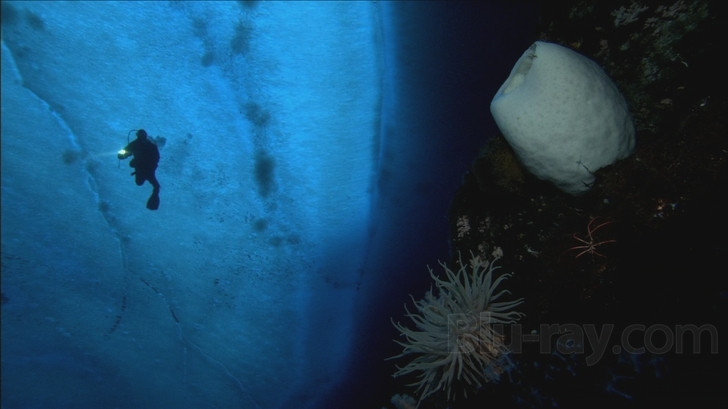
Notice the blue sheet of ice directly behind the diver.
Under Antarctic Ice:
Originally airing September 18, 2008, this episode takes viewers on a diving expedition to McMurdo Station in the heart of Antarctica. The first segment follows three divers as they tunnel down through six feet of ice, and descend into the crystal clear water around Little Razorback Island (a small rock outcropping surrounded by a sea of snow). Next up, we witness a research experiment by the same crew of divers, but this time they strap cameras and sensors to a large seal in an effort to track the mating patterns of the local population. This works fairly well, though the seals eventually seem more interested in the human divers than each other. Around the halfway point of the episode, the diving crew takes a trip out to a large glacier they believe to be floating in the water. What they find instead is a massive glacier suspended on a large rock formation, similar to a stranded ship. Rounding out the episode, there’s a seemingly tacked on segment showing a school of curious whales that emerge in the wake of an icebreaking ship. The last stretch doesn’t seem to have much bearing on the “diving” focus of the earlier segments, but perhaps the producers felt it was too important to leave out. Of note, the narration on this episode is delivered by Academy Award winner Hilary Swank.
Encountering Sea Monsters:
Originally airing December 18, 2005, this episode follows diver/cameraman Bob Cranston on his pursuit of the elusive Humboldt Squid (also known as the Red Devil). Accompanied by fellow divers along the way, Cranston offers a glimpse of various cephalopods (from the Greek word meaning “head-footed”), a class of muluscs that includes squid, octopus, and cuttlefish. Most of the dive locations are murky environments full of odd colored “monsters” that co-exist in the oxygen-rich ecosystem, and develop curious methods of camouflage. Some of the more intriguing segments within the episode show the mating rituals of the undersea creatures, a squid that carries his makeshift home around with him (a glass bottle), and the destructive strength of the suction-covered appendages trailing behind these species. As the show winds down to its dramatic conclusion, Cranston’s finally given his dream encounter with a Humboldt Squid, and lives to tell about it. Of note, the narration throughout this episode is delivered by actor Tim Matheson.
If I were forced to pick the better of the two episodes, I’d go with the one set in Antarctica. Ever since I was introduced to Werner Herzog’s Encounters at the End of the World, I’ve been fascinated with the underwater environment of the ice-covered ecosystem. That same sense of wonder can be found in the stunning underwater photography on this episode, making it a real pleasure to sit through. On the flipside, the Encountering Sea Monsters felt as if it was trying too hard to generate interesting subject matter. The entire “Red Devil” encounter is conveyed in an overblown manner that reminded me of a shark attack. Considering I never truly sensed much danger during the sequence, it comes across as overly dramatic. Additionally, the squid “experts” introduced throughout the episode often provide their own personal brand of insight that stretches the boundaries of creativity. I’m not saying they don’t know what they’re talking about, but there’s something to be said for introducing human interaction into a scientist’s life.
Nature: Antarctica Blu-ray Movie, Video Quality 
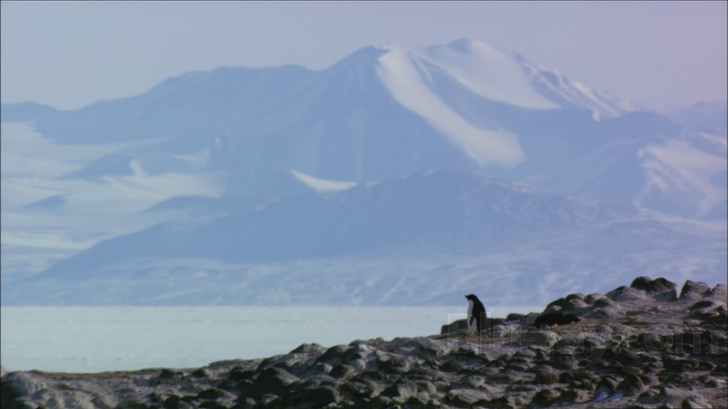
Presented in 1080i utilizing the AVC codec (at an average bitrate of 25Mbps), Nature offers a number of inconsistencies that prevent it from earning high marks for image quality. Part of the problem lies in the wavering strength of the source material, which incorporates both high-def and standard-def footage. As you can imagine, the 480p moments fare the worst, allowing significant aliasing to creep in along diagonal borders. During these low-res segments, scan lines cover moving shapes, indicating this was sourced from an intermediate master (since the scan lines are typically a transfer-related product not present in the original photography). Thankfully, the high-definition sequences comprise at least 80% of the two episodes, allowing sufficient detail and color depth to shine through. There are still moments of aliasing that creep in from time to time, but they're not nearly as bothersome in comparison with the low-res footage. Continuing with the positives, the transfer contains a vivid, naturalistic color spectrum that recreates the palette of various environments, black levels remain strong throughout, and contrast delivers an accurate degree of shade separation.
Nature: Antarctica Blu-ray Movie, Audio Quality 
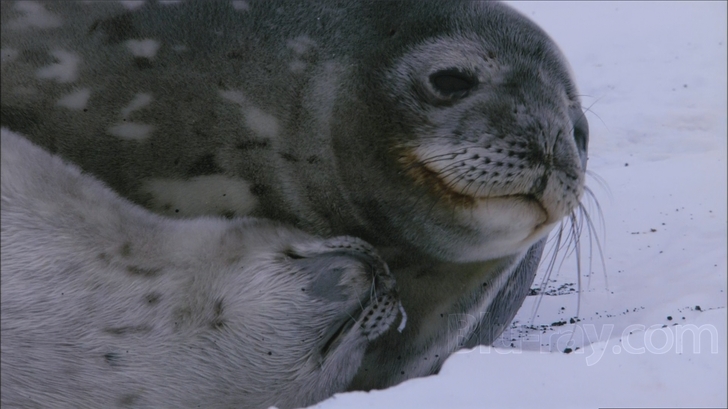
The audio offerings included on the disc may not be worth writing home about, but given the budgetary constraints of the series, I honestly didn't expect much. The primary audio track is a compression-heavy Dolby Digital 5.1 option, which offers little in the way of surround activity. The secondary mix is a lossless 2.0 version of the same language track, with minimal appreciable differences. If anything, the most profound change in the transition to the lossless track is a significantly higher volume level, which is partially based on the transfer of the audio found in the center channel (on the 5.1 version) to the left and right main speakers. Aside from the volume element there's really no difference in surround activity from the front-based source material, and only a mild boost in clarity from the lossless option (when compared at a similar level of volume).
Of note, there's a major glitch at the end of the Encountering Sea Monsters episode that results in horrible speaker-killing static during the end credit sequence (on the lossless version). Thankfully, there's no damage my front mains as a result of the problem, but it's something I hate to see slip past the QA department at Questar.
Nature: Antarctica Blu-ray Movie, Special Features and Extras 
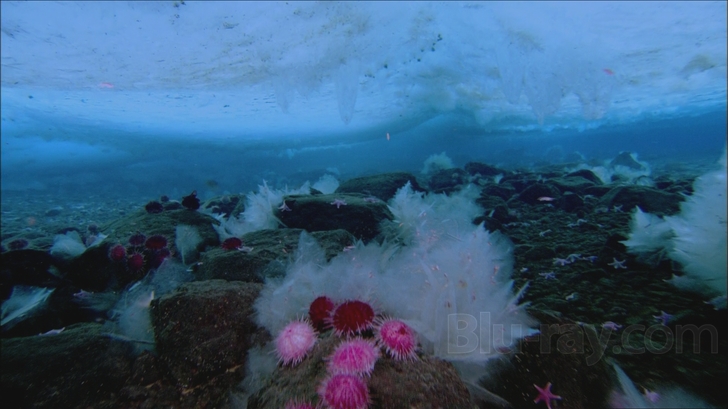
There are zero supplements included on the disc.
Nature: Antarctica Blu-ray Movie, Overall Score and Recommendation 
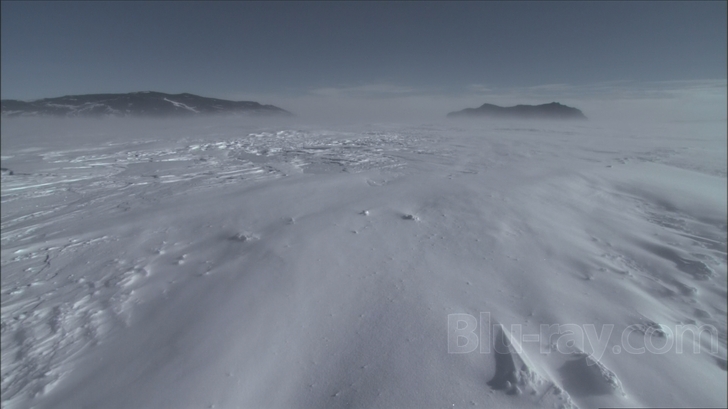
Offering a recommendation on the Nature television series is difficult for several reasons. First, it's tough selling viewers on the idea of purchasing a nature production two episodes at a time. Second, why pay slightly more than the average price of a Blu-ray for episodes of a series that's available for free on most local PBS stations? Lastly, given the relatively low production values in comparison with other series currently airing on Discovery HD and Animal Planet, I find it difficult to recommend the addition of these episodes to your collection. Most of the people interested in owning the Nature series on Blu-ray likely already own Planet Earth and a handful of other superior productions, so there's a worry this will fail to meet expectations (with the bar already set quite high). I have no problem recommending this as a rental, but a purchase is not advisable.
Other editions
Nature: Other Seasons

Nature: Extraordinary Animals: Africa

Nature: Broken Tail: A Tiger's Last Journey

Nature: Salmon: Running the Gauntlet

Nature: Survivors of the Firestorm

Nature: Outback Pelicans

Nature: Yosemite

Nature: Extraordinary Birds
2000

Nature: Shark Mountain
2004

Nature: The Desert Lions
2008

Nature: American Eagle
2008

Nature: Amazing Places: Hawaii
Kilauea: Mountain of Fire / Violent Hawaii
2009

Nature: Amazing Places: Africa
Victoria Falls / Drakensberg: Barrier of Spears
2009

Nature: Amazing Places: Hawaii
Kilauea: Mountain of Fire / Violent Hawaii
2009

Nature: Amazing Places: Africa
Victoria Falls / Drakensberg: Barrier of Spears
2009

Nature: Cuba: The Accidental Eden
2010

Nature: Echo: An Elephant to Remember
2010

Nature: A Murder of Crows
2010

Nature: Braving Iraq
2010

Nature: Revealing the Leopard
2010

Nature: Hummingbirds: Magic in the Air
2010

Nature: Elsa's Legacy: The Born Free Story
2011

Nature: Birds of the Gods
2011

Nature: The Himalayas
2011

Nature: Bears of the Last Frontier
Bears of the Last Frontier: City of Bears / Bears of the Last Frontier: The Road North / Bears of the Last Frontier: Arctic Wanderers
2011

Nature: Jungle Eagle
2011

Nature: My Life as a Turkey
2011

Nature: Radioactive Wolves
2011

Nature: The Animal House
2011

Nature: Kangaroo Mob
2011

Nature: Fortress of the Bears
2012

Nature: Raccoon Nation
2012

Nature: River of No Return
2012

Nature: The White Lions
2012

Nature: Cracking the Koala Code
2012

Nature: An Original DUCKumentary
2012

Nature: Cold Warriors: Wolves and Buffalo
2013

Nature: Legendary White Stallions
2013

Nature: Great Zebra Exodus
2013

Nature: Love in the Animal Kingdom
2013

Nature: Ireland's Wild River
2014

Nature: Snow Monkeys
2014

Nature: The Gathering Swarms
2014

Nature: Fabulous Frogs
2014

Nature: Owl Power
2015

Nature: Super Hummingbirds
2016

Nature: The Story of Cats
The Story of Cats: Asia to Africa / The Story of Cats: Into the Americas
2016

Nature: Sex, Lies and Butterflies
2018

Nature: Super Cats
Super Cats: Extreme Lives / Super Cats: Cats in Every Corner / Super Cats: Science and Secrets
2018
Similar titles
Similar titles you might also like
(Still not reliable for this title)

Attenborough's Life Stories
Attenborough: 60 Years in the Wild: The Complete Three-Part Documentary Series
2013

Best of Europe: London & Beyond

Scenic Walks Around the World: Our Dramatic Planet

Best of Europe: Italy

Best of Europe: France

Sports Illustrated Swimsuit 2011: The 3D Experience
2011

Beautiful Planet: France & Italy

IMAX: Born to Be Wild 3D
2011

The Alps
IMAX
2007

Dinosaurs Alive!
IMAX
2007

Earth: One Amazing Day 4K
2017

Galápagos
2006

Nature's Most Amazing Events
2009

One Life
2011

Planet Ocean
2012

Journey to the Edge of the Universe
2009

Frozen Planet
The Original UK Series
2011

Wonders of the Universe
BBC
2011

Atmospheres: Earth, Air & Water
2008

Serengeti
2019